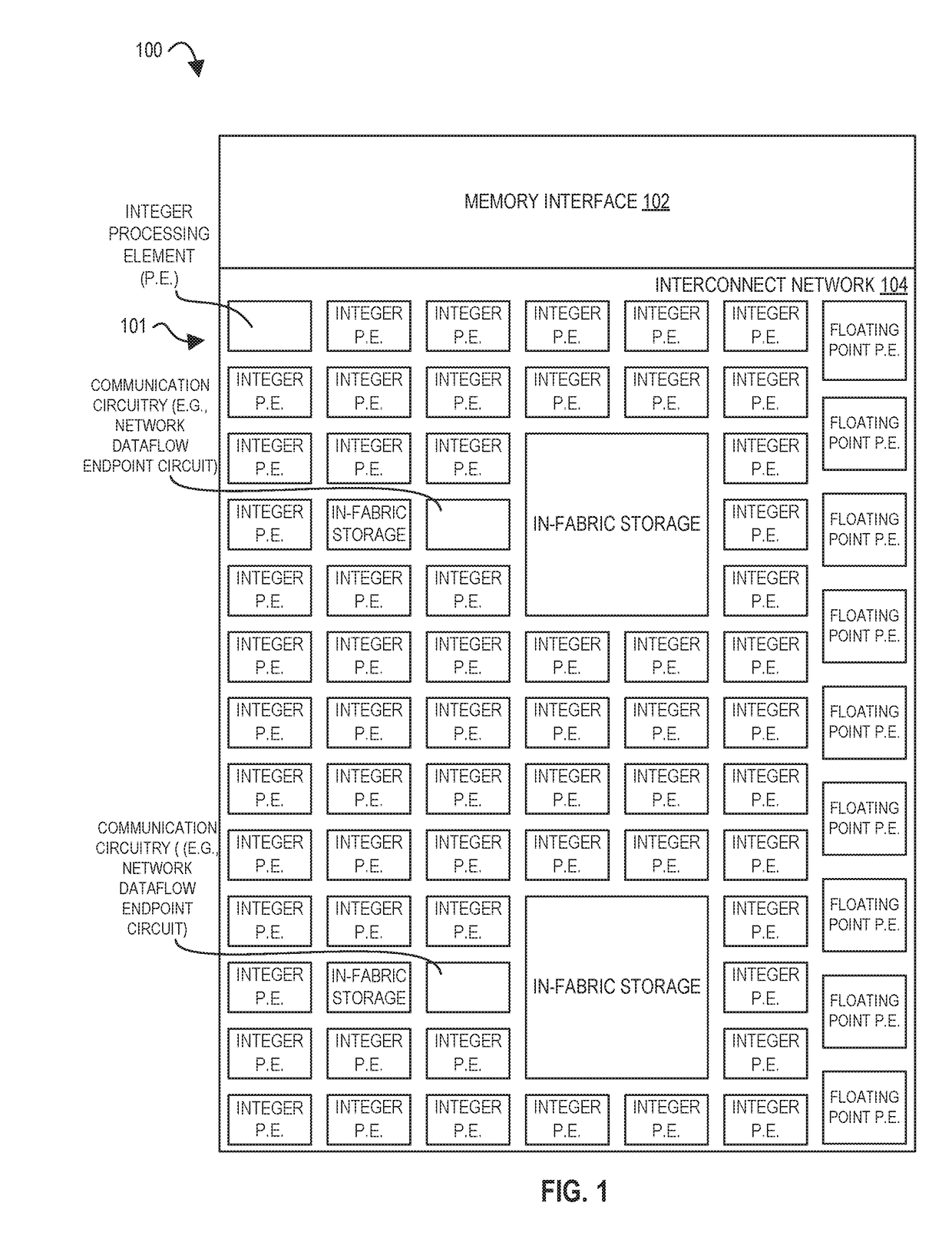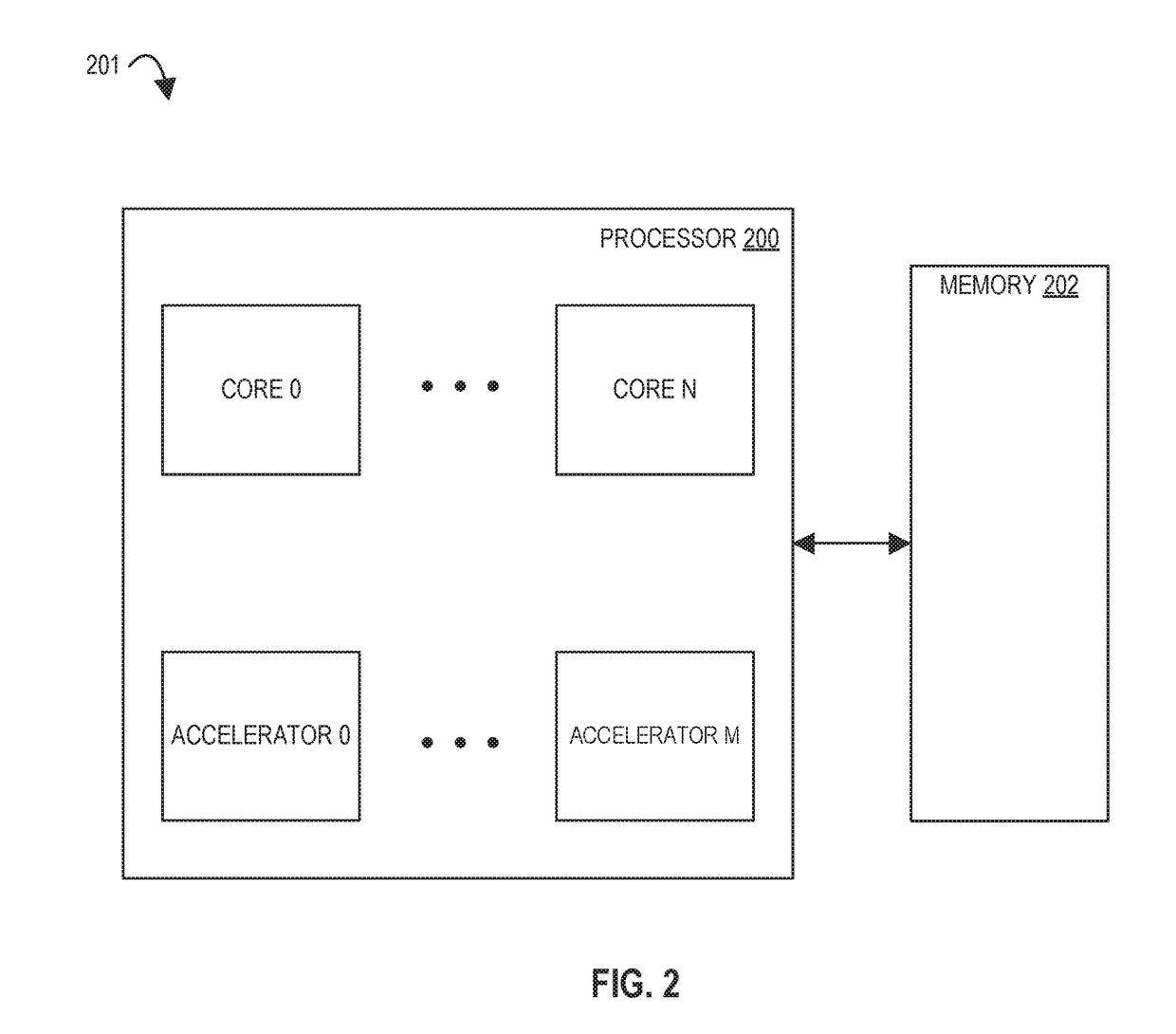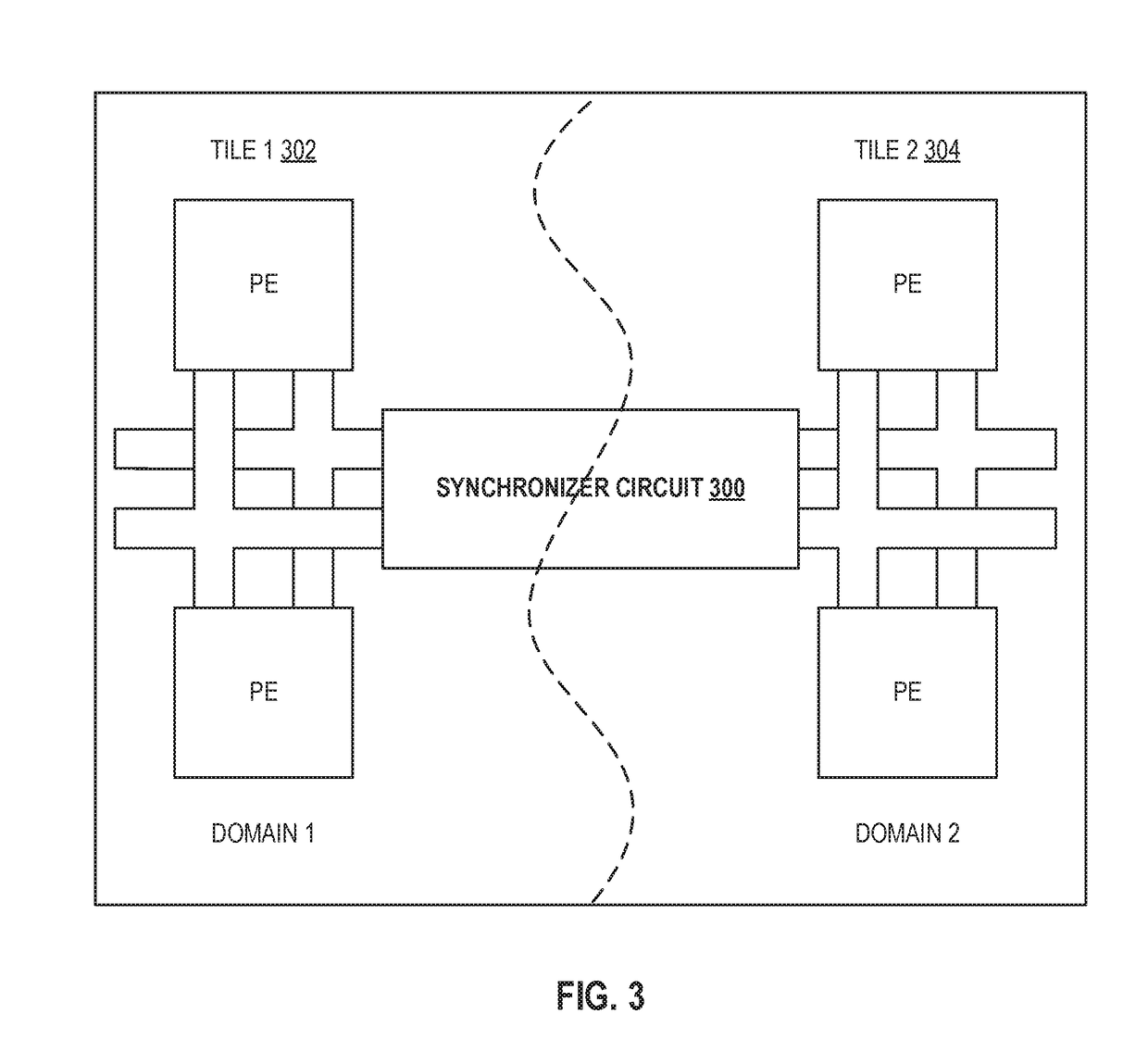However, simultaneously improving the performance and energy efficiency of program execution with classical von Neumann architectures has become difficult: out-of-
order scheduling, simultaneous multi-threading, complex register files, and other structures provide performance, but at
high energy cost.
However, if there are less used code paths in the loop body unrolled (for example, an exceptional code path like
floating point de-normalized mode) then (e.g., fabric area of) the spatial array of
processing elements may be wasted and
throughput consequently lost.
However, e.g., when
multiplexing or demultiplexing in a spatial array involves choosing among many and distant targets (e.g., sharers), a direct implementation using
dataflow operators (e.g., using the
processing elements) may be inefficient in terms of latency,
throughput, implementation area, and / or energy.
Some operators, like those handling the unconditional evaluation of
arithmetic expressions often consume all incoming data.
However, it is sometimes useful for operators to maintain state, for example, in accumulation.
These
software solutions may introduce significant overhead in terms of area,
throughput, latency, and energy.
Both of these operations may cause the creation of memory transactions.
This may result in
control flow tokens or credits being propagated in the associated network.
Initially, it may seem that the use of
packet switched networks to implement the (e.g., high-radix staging) operators of multiplexed and / or demultiplexed codes hampers performance.
In a (e.g., slow) fabric like a FPGA, this may add hundreds of nanoseconds worth of latency.
This may arise when some RAF buffers are full and some are not, or if the ACI network 1503 bandwidth is insufficient for a full LFQ operation.
However, a RAF circuit may also support unexpected, in-bound communications.
This may create an
engineering tradeoff, e.g., tuning for larger or smaller bit widths may make a certain bit width more efficient, while other bit widths become less efficient.
However, the longest circuit critical path in the synchronous fabric may determine
cycle time, e.g., which may add a latency penalty to designs which do not make use of this path.
Tokens and antitokens may both annihilate when they collide.
This may result in
control flow tokens or credits being propagated in the associated network.
Initially, it may seem that the use of
packet switched networks to implement the (e.g., high-radix staging) operators of multiplexed and / or demultiplexed codes hampers performance.
However, enabling real
software, especially programs written in legacy sequential languages, requires significant attention to
interfacing with memory.
However, embodiments of the CSA have no notion of instruction or instruction-based program ordering as defined by a
program counter.
Exceptions in a CSA may generally be caused by the same events that cause exceptions in processors, such as illegal operator arguments or reliability, availability, and serviceability (RAS) events.
For example, in spatial accelerators composed of small
processing elements (PEs), communications latency and bandwidth may be critical to overall program performance.
Although runtime services in a CSA may be critical, they may be infrequent relative to user-level computation.
However, channels involving unconfigured PEs may be disabled by the
microarchitecture, e.g., preventing any undefined operations from occurring.
However, by nature, exceptions are rare and insensitive to latency and bandwidth.
Packets in the local exception network may be extremely small.
While a program written in a high-level
programming language designed specifically for the CSA might achieve maximal performance and / or energy efficiency, the adoption of new high-level languages or
programming frameworks may be slow and limited in practice because of the difficulty of converting existing code bases.
It may not be correct to simply connect channel a directly to the true path, because in the cases where execution actually takes the
false path, this value of “a” will be left over in the graph, leading to incorrect value of a for the next execution of the function.
In contrast, von Neumann architectures are multiplexed, resulting in large numbers of bit transitions.
In contrast, von Neumann-style cores typically optimize for one style of parallelism, carefully chosen by the architects, resulting in a failure to capture all important application kernels.
Were a time-multiplexed approach used, much of this energy savings may be lost.
The previous
disadvantage of configuration is that it was a coarse-grained step with a potentially large latency, which places an under-bound on the size of program that can be accelerated in the fabric due to the cost of context switching.
As a result, configuration throughput is approximately halved.
Thus, it may be difficult for a
signal to arrive at a distant CFE within a short
clock cycle.
For example, when a CFE is in an unconfigured state, it may claim that its input buffers are full, and that its output is invalid.
Thus, the configuration state may be vulnerable to soft errors.
As a result, extraction throughput is approximately halved.
Thus, it may be difficult for a
signal to arrive at a distant EFE within a short
clock cycle.
Supercomputing at the ExaFLOP scale may be a challenge in high-
performance computing, a challenge which is not likely to be met by conventional von Neumann architectures.
 Login to View More
Login to View More  Login to View More
Login to View More 


